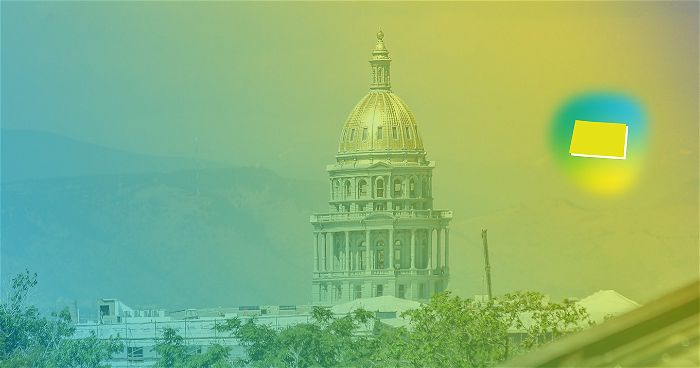
Dual Enrollment Is Taking Over Community College: Is a New Institution Emerging?
August 10, 2023
Consider this: High school students can save community colleges, but not the way you think.
It’s right there in front of our eyes—the increase in high school dual enrollment at community colleges. Educators and policymakers are taking note. But what do they see? If the answer is a good way to increase enrollment, then they’re missing the big question this phenomenon raises.
Here’s how the narrative is currently framed: “Can High Schoolers Save the Community College?” asked a November 2022 Inside Higher Ed article. In a recent Jobs for the Future (JFF) interview, Adam Cutler, a dean at Northern Essex Community College in Massachusetts, told me: “One-third of our enrollment is high schoolers.” His college is not alone. Those high schoolers whose tuition is paid with public dollars are an increasing source of revenue and, yes, a way to increase enrollment.
But what does this growing population of younger students foretell? When half of community college students are high schoolers, will we say “good for the bottom line” and leave it there, or will we reframe the narrative?
Enter the Big Blur.
For the last two years, JFF has been leading provocative discussions with educators and workforce leaders that pose a variety of huge “what ifs.” What if leaders commit once and for all to providing the education, training, and learning experiences all young people need to launch productive adulthoods? What if the way to do this is not only to scale early colleges and dual/concurrent enrollment but also to create or mold new institutions out of the old? These new institutions have already been foreshadowed in the data about increases in dual enrollment.
Why not just continue to scale dual enrollment by admitting all the high school students who are able to enroll? For more than 20 years, JFF has been leading and guiding dual enrollment, early college, and career pathways implementation across the country and advocating for supportive policy. Now, the JFF Education practice team is acting on a frustration at the limited progress the country has made in launching Black, Latinx, and Indigenous young people and those experiencing poverty into and through postsecondary education and into a quality job with the option of additional education and the advantages of a career ladder. As we note in the Big Blur, children born into our country’s lowest two wealth groups—those with earnings in the bottom 40% of the U.S. population—graduate from college at a rate of only 11.8%, a figure that has barely budged over the last decade.
We took a deep breath and put forward a radically different way to think about what young adults need by way of education and training.
Right now, to put dual enrollment, early colleges, and similar successful evidence-based practices in place, practitioners are solving the same problems and addressing the same costly inefficiencies with each replication—nothing works smoothly. Implementers struggle with funding streams, calendars, credit hours, Carnegie Units, course alignment, curriculum repetition, and student workplace experience. On the policy front, issues may include incentives, accountability, staffing, and other rules and regulations that, if not barriers, aren’t enablers, either. The list could go on, and the categories range from trivial and yet annoying (calendars) to daunting (accountability skewed to degree completion, not careers). Couple these difficulties with the scenario playing out before us—so many high school students deciding to get a head start on college in high school for free when they are aware of the option—and the narrative leads straight to the Big Blur.
Along with holding state-level learning labs to move the conversation forward, JFF has developed a “models-on-the-ground” document that includes ideal Blur criteria in five categories: program design, student learning experience, student supports, career navigation and preparation, and employer collaboration. These build from the many excellent models that attempt to erase the distinction between high school and college and embed work experience into both with the goal of improving the prospects of a quality first job. But, importantly, these are high school-initiated programs—community colleges play a supporting role. And yet, community colleges are turning themselves into new kinds of hybrid institutions, combo high school-colleges serving thousands of 16- and 17-year-olds along with a growing population of older adults.
At JFF’s Horizons, the JFF team gathered 40 Blur proponents for a day-long pre-meeting. The meeting left me with my head spinning—almost all agreed that the vision is so right at a high level but disagreed about how far down the road to the Blur vision policy and practice we really are. Those high school students now taking college courses in such large numbers would benefit from the three scenarios that I took from the June 13 discussion.
- Incremental: Attack and delete a subset of “annoyances.” In a school-college partnership, the leadership team selects a subset of barriers to eliminate. The list includes credit hours/Carnegie units; disparate academic calendars, course numbering systems, and class schedules; and nontransferable credits. This scenario will be hard work but could open the door to greater efficiency and would take at least one or two big negotiation points off the table.
- More radical: Move 11th and 12th grades into college. In this scenario, students finish the majority of their high school requirements in ninth and 10th grades, and the remainder are credited concurrently with college courses. Students enter college in 11th grade and complete their associate’s and high school degrees concurrently. This is a model scaled in Texas and happening and emerging elsewhere. Research shows that students taking courses on the college campus with college students have higher rates of retention than those taking courses with their peers in their high schools with high school teachers. (1)
- The Big Blur: Take a deep breath and imagine the young adult Career Launch Institute. Since enrollment has declined at many community colleges, they have the space and personnel to meet the moment. In order to thrive, community colleges must embrace innovation and reimagine how they serve 16- to 20-year-olds. The new Career Launch Institute is a hybrid organization—a combo of apprenticeship, tech training, and deeply personal curriculum—taking the best of the questions young adults ask about their current and future lives and basing a broad foundational curriculum on such questions.
Guided by criteria generated for our Horizons pre-meeting, the Career Launch Institute demonstrates:
- Funding for the blurred model is efficiently braided or single source
- Grade levels and high school/college distinctions disappear and become a series of learning experiences
- Career preparation activities are integrated into teaching and learning and sequenced but also iterative
- Career navigation offerings come with multiple touchpoints and are the responsibility of all adults who interact with young people
- Students are taught to build networks/social capital in encounters with a wide range of adults and to use these networks as they begin their job searches
- Certifications valued in the labor market are embedded in and integrated with students’ academic plans
- Work-based learning is staged from exploration to preparation to internships or apprenticeships
- Learners develop and demonstrate the ability to address and navigate unanticipated, real-world problems demonstrating “durable” or professional skills and competencies
Admittedly, No. 3 is quite a stretch, but it’s also the kind of thinking we want the Blur to inspire. Dreaming of creating the Career Launch Institute should make the first two approaches seem possible as states adapt Blur ideas as their own in the coming months and years. The imperative of this blog is for community colleges to recognize what’s before their eyes and to work with high schools and employers to construct the education and career preparation system the United States needs. And the bigger imperative is to address the hopes and dreams of young people. As a draft chapter of a new book on young adult occupational identity formation—the ninth in the Harvard Education Press Work and Learning Series—states:
“It seems disingenuous to continue to frame occupational identity as linear, when, in fact, we know that if we are successful in our work, young people will be equipped to engage in a lifelong process of getting to know themselves and their strengths and skills and interests, and making decisions that align with what they know and are learning about themselves. Our job . . . should be to ensure that every young person has an abundance of high-quality choices from which to choose and that they feel clear and confident about what choices are best for them.” (2)
This is the true north of the Big Blur.

Related Content

Toward the Big Blur: State Governance of a Unified Education-to-Workforce System That Works for Everyone
Jobs for the Future’s (JFF) vision for the Big Blur calls for entirely new educational institutions and systems to better prepare 16-to-20-year-olds for college and careers. This paper examines the new type of governance needed…

The Big Blur
An argument for erasing the boundaries between high school, college, and careers, and creating one new system that works for everyone. The Problem It’s time to give up tinkering and instead take on a radical…

The Big Blur: An Argument for Erasing the Boundaries Between High School, College, and Careers —and Creating One New System That Works for Everyone
This paper argues for a radical restructuring of education for grades 11–14—by erasing the arbitrary dividing line between high school and college—to open opportunities for the learners our current systems leave behind. We make the…

Toward the Big Blur: Momentum and Progress in Colorado
In this first in a series of case studies featuring leading-edge states, Jobs for the Future (JFF) documents key policies that Colorado is putting into place to erase the arbitrary boundaries between high school, college,…

Financing the Future
JFF’s Financing the Future initiative reimagines the way we finance education and skills development. JFF’s Financing the Future initiative reimagines the way we finance education and skills development. Our team is made up of individuals…

Postsecondary Network
Reforming math in Florida, ensuring equity in Washington, boosting student support in Michigan, partnering with the workforce system in New Jersey—JFF’s renowned network advances policies and practices that help all students attain high-value credentials. Reforming…

Policy & Advocacy
We are advancing evidence-based policy to enact changes in the education system and the workforce. Nearly half of U.S. workers are in low-paying jobs. Systemic issues in education, employment, and workforce development prevent millions of…


